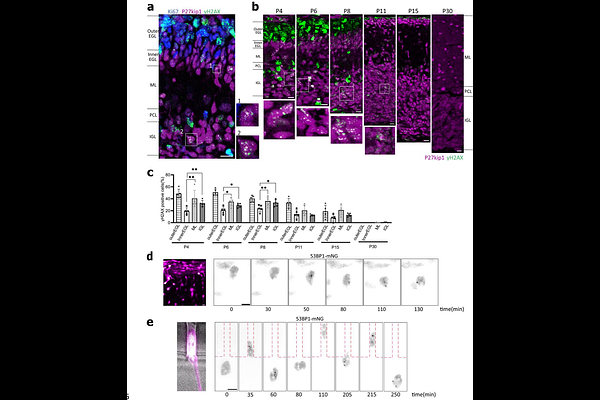Neuronal migration induces DNA damage in developing brain

Neuronal migration induces DNA damage in developing brain
Zhang, Z.; Canela, A.; Zou, P.; Furuta, T.; Takeda, N.; Kawaue, T.; Nakazawa, N.; Saeki, M.; Utsunomiya, M.; Kurisu, J.; Ishidate, F.; Sasanuma, H.; Kishi, Y.; Kengaku, M.
AbstractMigratory cells tend to have soft nuclei that deform and penetrate narrow spaces. Extensive nuclear deformation during migration can cause nuclear envelope rupture and DNA damage in cancer cells, which may contribute to the malignant transformation during tumor progression. However, the significance of DNA damage in physiological migration is less well understood. Here, we demonstrate that the migration of neurons in developing cerebral and cerebellar cortices is accompanied by massive DNA double-strand breaks (DSBs) due to mechanostress during passage through narrow interstitial spaces. Confined migration enhances the binding and cleavage of the genome by topoisomerase IIbeta expressed in neuronal nucleus, independently of the nuclear envelope rupture. Genome sequencing revealed that DSBs tend to occur outside of protein-coding regions and transcription regulatory regions. During normal development, DSBs are rapidly repaired by the non-homologous end joining pathway. The deletion of ligase IV at the onset of neuronal migration leads to persistent DSB accumulation in cerebellar neurons with moderate transcriptional changes in genes related to synaptic function, neuronal development, and stress and immune responses. The mutant mouse develops mild motor deficits in later life, suggesting that the DNA damage generated during normal brain development poses a potential disease risk if left unrepaired.